Indian Polity and Governance (Part 1): July 2025 Current Affairs | Current Affairs & General Knowledge - CLAT PDF Download
Judicial Discretion Key in POCSO Bail Decisions
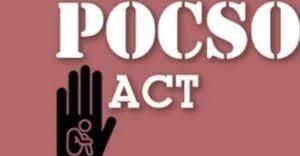
Why in News?
A special POCSO court in Mumbai has recently granted bail to a 40-year-old teacher accused of sexually assaulting a minor, citing consensual relations. This decision has brought renewed attention to the complexities surrounding bail under the POCSO Act, which imposes stricter guidelines than standard criminal law.
Key Takeaways
- The burden of proof in POCSO cases shifts to the accused, complicating bail processes.
- Bail decisions depend heavily on judicial discretion, balancing individual liberty and victim protection.
Additional Details
- POCSO Act (2012): A legislative framework aimed at protecting children (under 18 years) from sexual offences, including abuse, harassment, and exploitation.
- Key Features:
- Gender-neutral protection: The Act applies equally to boys and girls.
- Wide range of offences: It includes both penetrative and non-penetrative assault, sexual harassment, and child pornography.
- Special courts: Establishment of child-friendly Special Courts for expedited trials.
- Mandatory reporting: Legal obligation for individuals to report child sexual abuse.
- Presumption of guilt: The accused must demonstrate innocence, inverting the standard legal principle of "innocent until proven guilty."
- Confidentiality: The Act protects the identity of the child to prevent further trauma.
- Support for Victims: Frameworks are in place for victim support and rehabilitation.
- Child-Friendly Procedures: Emphasizes appropriate procedures for recording statements and conducting medical examinations.
- POCSO offences are cognizable and non-bailable, with no guaranteed bail and arrests can occur without a warrant.
- Courts consider factors such as the severity of the offence, potential punishment, flight risk, and risk of evidence tampering when deciding on bail.
- Recent cases, like Deshraj @ Musa vs State of Rajasthan (2024), illustrate how judicial discretion is crucial, especially when assessing the context of relationships involving minors.
Conclusion
While the POCSO Act aims to protect minors, its provisions regarding consent and bail create legal complexities. Judicial discretion plays a pivotal role in navigating these challenges, particularly in cases involving consensual adolescent relationships, where the law treats all sexual activity with minors as an offence.
The Medical Boundaries for AYUSH Practitioners

Why in News?
A recent controversy on X (Twitter) involving a hepatologist and an Indian chess Grandmaster has reignited the long-standing debate over whether practitioners of traditional medicine, such as Ayurveda and Unani, can legitimately claim the title of “doctor” and prescribe modern medicine.
Key Takeaways
- Concerns about lack of scientific training among Ayurvedic practitioners.
- Legal ambiguities due to conflicting state orders regarding prescribing rights.
- Risks posed to patient safety in critical care settings.
- Impacts on public health insurance and the integration of traditional medicine.
Additional Details
- Lack of Scientific Training: Ayurvedic doctors often lack formal training in modern pharmacology and diagnostic methods, which can lead to inappropriate prescriptions. For instance, there have been cases where Ayurvedic practitioners prescribed steroids and antibiotics without understanding their side effects or appropriate dosages.
- Violation of Legal Norms: According to the Supreme Court judgment in the Dr. Mukhtiar Chand case, non-MBBS practitioners are not permitted to prescribe allopathic medicines. However, some states have passed conflicting executive orders, resulting in legal ambiguity.
- Consumer Deception: Patients may mistakenly believe they are consulting an MBBS-qualified doctor when receiving treatment from Ayurvedic practitioners, leading to misrepresentation and potential legal challenges.
- Endangerment in Critical Care: The employment of Ayurvedic doctors in emergency wards poses risks to patient safety, as treatment delays or incorrect interventions have been reported.
- Undermining Rational Drug Use: The unregulated prescription of allopathic medicines by Ayurvedic practitioners contributes to issues such as antibiotic resistance, as highlighted by a Uttar Pradesh health audit revealing significant instances of AYUSH doctors prescribing modern medications without proper oversight.
- Evolution of Traditional Medicine Regulation: Post-independence, India recognized traditional systems like Ayurveda and Unani, culminating in the establishment of the Ministry of AYUSH in 2014 to promote and regulate these practices.
- Integration with Mainstream Healthcare: Traditional medicine has become increasingly integrated into public health policies, reflected in initiatives like the National Health Policy (2017) and AYUSH Health and Wellness Centres.
- Rule 2(ee) of the Drugs and Cosmetics Rules: This rule defines “registered medical practitioners” who may prescribe modern drugs, allowing state governments discretion to include non-MBBS practitioners, which has led to ongoing legal disputes.
- Impact on Public Health Insurance: AYUSH practices are included under the Ayushman Bharat – Pradhan Mantri Jan Arogya Yojana (AB-PMJAY), promoting access to traditional treatments in underserved areas and reducing costs for patients.
- Moving forward, it is essential to strengthen evidence-based integration of traditional medicine, depoliticize health governance, and ensure that AYUSH practices are scientifically validated and regulated to maintain public trust and safety.
Justice on Hold: India’s Courts are Clogged
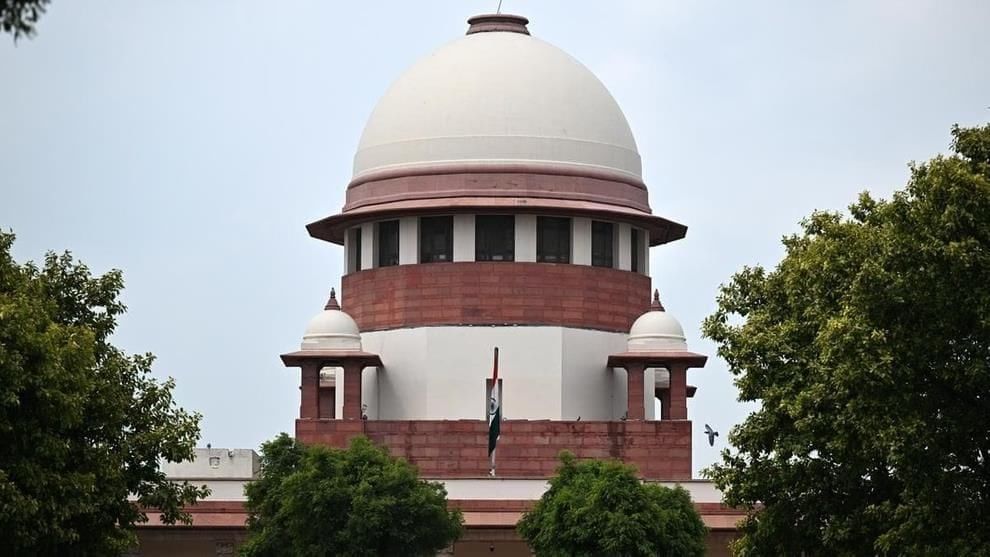
Why in News?
India's judicial system is currently facing significant challenges due to a backlog of cases, with more than 4.5 crore cases pending in various courts. This situation has raised concerns about the efficiency of the legal system and its impact on public trust.
Key Takeaways
- Judicial delays are undermining public faith in the legal system.
- The backlog is attributed to various systemic issues, including judicial vacancies and inadequate infrastructure.
- Alternative Dispute Resolution (ADR) mechanisms, such as Lok Adalats, are being highlighted as a solution to alleviate the burden on traditional courts.
Additional Details
- Judicial Vacancies: A significant shortfall of judges results in increased workloads for the remaining judges, contributing to prolonged case processing times. As of 2024, over 30% of High Court positions are unfilled, exacerbating this issue.
- Procedural Inefficiencies: Outdated legal procedures and frequent adjournments lead to unnecessary delays in case hearings. For instance, civil suits often see routine adjournments which can extend hearings for years.
- Impact of ADR: Alternative Dispute Resolution methods, including mediation and arbitration, help in resolving disputes outside of the formal court system, thus reducing the number of pending cases. The Delhi mediation center has resolved over 2 lakh cases since its inception in 2005.
- Lok Adalats: These are effective in quickly resolving a high volume of cases, particularly compoundable civil and petty criminal matters. A recent National Lok Adalat settled 1 crore cases in just one day, showcasing their efficiency.
- The systemic issues plaguing India's judicial system necessitate urgent reforms, including increased judicial appointments and the promotion of ADR mechanisms. Improving legal literacy and integrating digital solutions can also enhance the overall efficiency of the judicial process.
Internal Complaints Committee (ICC) under POSH Act
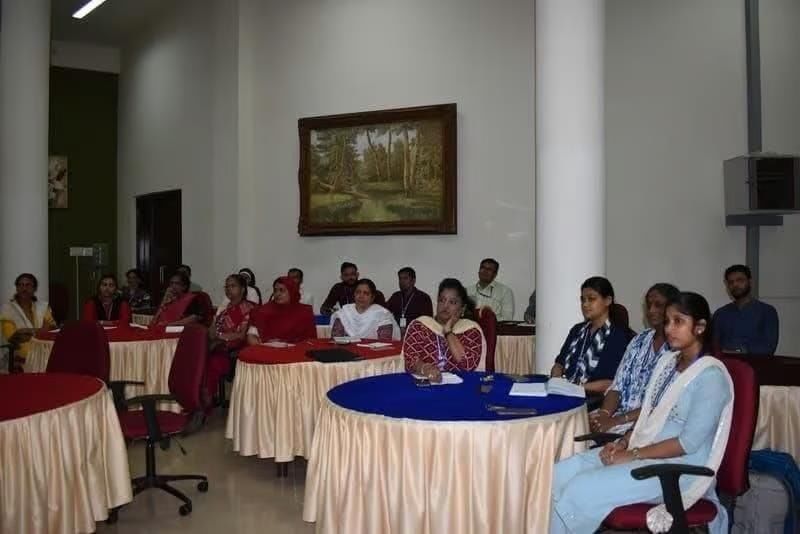
Why in News?
A tragic incident in Odisha, where a student died by suicide following the rejection of her sexual harassment complaint by her college's Internal Complaints Committee (ICC), has highlighted an urgent need for more effective grievance mechanisms.
Key Takeaways
- The ICC is established under the Sexual Harassment of Women at Workplace (Prevention, Prohibition and Redressal) Act, 2013 (POSH Act).
- It is mandatory for all organizations with 10 or more employees to have an ICC in place.
- The ICC aims to provide a safe and dignified workplace for women by addressing harassment complaints.
Additional Details
- Legal Basis: The ICC was mandated by the POSH Act, which provides a framework for addressing sexual harassment at the workplace.
- Composition: The ICC must include a presiding officer who is a senior woman employee, at least two internal members with legal or social expertise, and one external member with knowledge of sexual harassment issues. A minimum of 50% of the members must be women.
- Powers and Functions: The ICC can accept complaints within 3 months of the incident, offer conciliation, and initiate formal inquiries. It has powers similar to a civil court, including summoning witnesses and collecting evidence. The inquiry must be completed within 90 days while maintaining confidentiality.
- Post-Inquiry Actions: After the inquiry, the ICC recommends disciplinary actions or closure of the case, and the employer must act on these recommendations within 60 days. The ICC can also assist in filing FIRs if the complainant seeks criminal action.
- This news underlines the critical need for effective implementation of the ICC provisions to ensure a safe environment for women in educational institutions and workplaces. The POSH Act serves as a vital legal framework to uphold gender justice and provide necessary redressal mechanisms.
Not the Way Criminalising Adolescent Sex Will Undermine the Aim of the POCSO Act
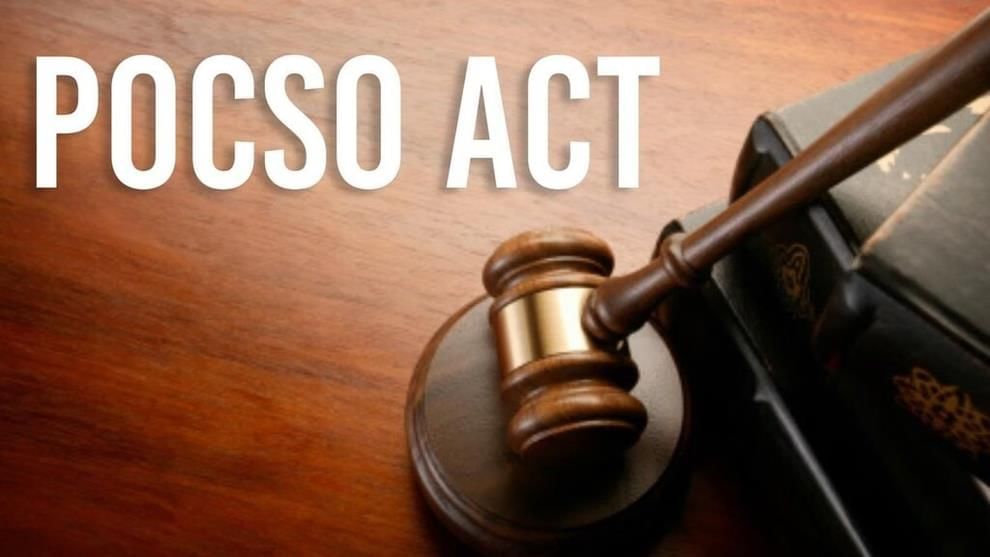
Why in News?
The Protection of Children from Sexual Offences (POCSO) Act, 2012 is currently under examination by the Supreme Court to determine whether consensual sexual activities between adolescents aged 16-18 should be decriminalised.
Key Takeaways
- Criminalising consensual relationships among adolescents leads to misuse of the law.
- Adolescents are denied their sexual autonomy and agency over consensual decisions.
- Legal exceptions for consensual relationships exist based on evolving capacities recognized by international norms.
Additional Details
- Unjust Persecution of Consensual Relationships: Criminalisation results in unnecessary legal actions against young individuals in voluntary relationships. Courts have noted that rather than being protected, teenagers are treated as offenders, contradicting the protective intent of the POCSO Act.
- Denial of Sexual Autonomy: Adolescents are seen as lacking agency in their consensual decisions, which are equated to sexual offences. According to Section 2(d) of POCSO, individuals under 18 are classified as children, rendering their consent legally meaningless.
- Evolving Capacity of Adolescents: The UN Convention on the Rights of the Child (UNCRC) acknowledges that adolescents possess evolving capacities and may have the maturity to make informed decisions regarding consensual relationships. The Madras High Court has suggested that consensual relationships among adolescents should not be criminalised, especially when the age difference is minimal (within 5 years).
- Legal Recommendations: The Law Commission of India has advocated for "guided judicial discretion" in such cases, allowing judges to consider the consensual nature of relationships when determining penalties, thus avoiding harsh sentences for adolescent partners.
- The debate surrounding the POCSO Act and the age of consent highlights the need for legal frameworks to adapt to the realities of a progressive society. It is essential to ensure that normal adolescent behavior is not criminalised while still protecting individuals from exploitation.
Working of Internal Complaints Committees
Why in News?
A tragic incident in Balasore, Odisha, has brought attention to the functioning of Internal Complaints Committees (ICCs). A student committed self-immolation after her complaints of sexual harassment against the head of her department were dismissed by the college's ICC. Her family alleges that the committee was biased and lacked proper training, raising serious concerns about the effectiveness and neutrality of institutional grievance redressal systems.
Key Takeaways
- The ICC was established to address complaints of sexual harassment in educational and workplace settings.
- The POSH Act mandates the formation of ICCs in workplaces with more than 10 employees.
- Implementation of ICCs has been inconsistent, with criticisms regarding their training and effectiveness.
Additional Details
- Legal Framework Behind ICCs: The foundation for ICCs was established by the Supreme Court in 1997 through the Vishaka Guidelines. These guidelines were created in response to the gang-rape of Bhanwari Devi, a social worker in Rajasthan, and defined sexual harassment at the workplace. They mandated the creation of complaint committees led by women and involving external parties to ensure fairness.
- POSH Act: The Sexual Harassment of Women at Workplace (Prevention, Prohibition and Redressal) Act, 2013, made it mandatory for all workplaces with more than 10 employees to establish ICCs. It also allowed women in smaller or informal workplaces to seek redress through Local Committees formed by district authorities.
- Structure of ICC: Each ICC must be headed by a senior woman employee and include at least two internal members with relevant experience. Additionally, one external member is required, typically from an NGO, and at least half of the members must be women.
- Process of Filing Complaints: An aggrieved woman can submit a written complaint within three months of the incident. The ICC is required to complete its inquiry within 90 days and maintain strict confidentiality regarding the identities of all involved parties.
- Despite the framework, the implementation of ICCs remains poor, with the Supreme Court expressing concerns over enforcement and calling for immediate compliance. Activists have highlighted issues such as lack of training and confidentiality, leading to ineffective grievance redressal.
- The recent case in Balasore underscores the need for properly structured and enforced ICCs to ensure they function effectively rather than serve as mere symbolic representations of compliance.
Kargil Vijay Diwas
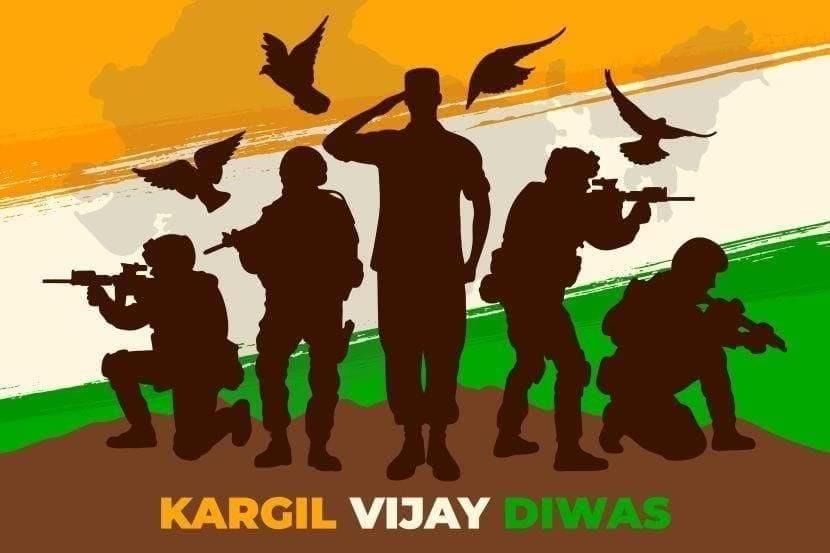
Why in News?
On the occasion of the 26th anniversary of Kargil Vijay Diwas, the President and Prime Minister of India led the nation in honoring the brave soldiers who sacrificed their lives during the Kargil War.
Key Takeaways
- Kargil Vijay Diwas is celebrated every year on July 26 to commemorate India's victory in the Kargil War against Pakistan.
- The year 2025 marks the 26th anniversary of this significant event.
Additional Details
- Kargil War: The conflict took place between India and Pakistan from May to July 1999 in the Kargil district of Kashmir along the Line of Control (LOC).
- Causes: Following the Lahore Declaration in February 1999, aimed at resolving tensions over Kashmir, Pakistani forces secretly infiltrated the Indian territory during the winter of 1998-1999.
- Operation Vijay: The Indian Army launched 'Operation Vijay' to reclaim strategic positions, including the famous 'Tiger Hill.'
- High Altitude Warfare: The war was fought at extreme altitudes, with battles occurring at heights exceeding 18,000 feet.
- Casualties: Approximately 500 Indian soldiers and around 1,000 Pakistani troops lost their lives during the conflict.
- The Kargil War concluded on July 26, 1999, marking a significant moment in India's military history. The sacrifices made by the soldiers are commemorated annually, reminding the nation of their valor and dedication to protecting India's sovereignty.
Lokpal of India
Why in News?
The Lokpal of India, which serves as the nation's central anti-corruption ombudsman, is progressing towards filling 81 approved posts on a deputation basis.
Key Takeaways
- The Lokpal was initially proposed in 1966 to combat high-level corruption.
- Despite multiple attempts, Lokpal Bills introduced between 1971 and 2008 were not passed.
- The Jan Lokpal Movement in 2011, led by Anna Hazare, galvanized public support for a robust anti-corruption body.
- The Lokpal and Lokayuktas Act was enacted in 2013, establishing the Lokpal formally in 2014.
- A significant organisational restructuring occurred in 2024 to address staffing shortages.
Additional Details
- Initial Proposal (1966): The concept of a Lokpal was first introduced by the First Administrative Reforms Commission to address corruption at high levels.
- Legislative Failures (1971–2008): Numerous Lokpal Bills were introduced in Parliament, but none succeeded in being enacted into law.
- Jan Lokpal Movement (2011): This nationwide agitation called for a more independent and powerful anti-corruption body, significantly affecting public opinion and political pressure.
- Formal Establishment (2014): The Lokpal of India was officially notified under the Lokpal and Lokayuktas Act on January 16, 2014.
- Recent Developments (2024): In response to increasing complaints and the need for more staff, 81 deputation posts were approved, pending future regular recruitment.
Overall, the Lokpal's evolution reflects India's ongoing struggle against corruption, with significant reforms and public movements shaping its current framework.
Comparative Overview: Lokpal vs. Lokayukta
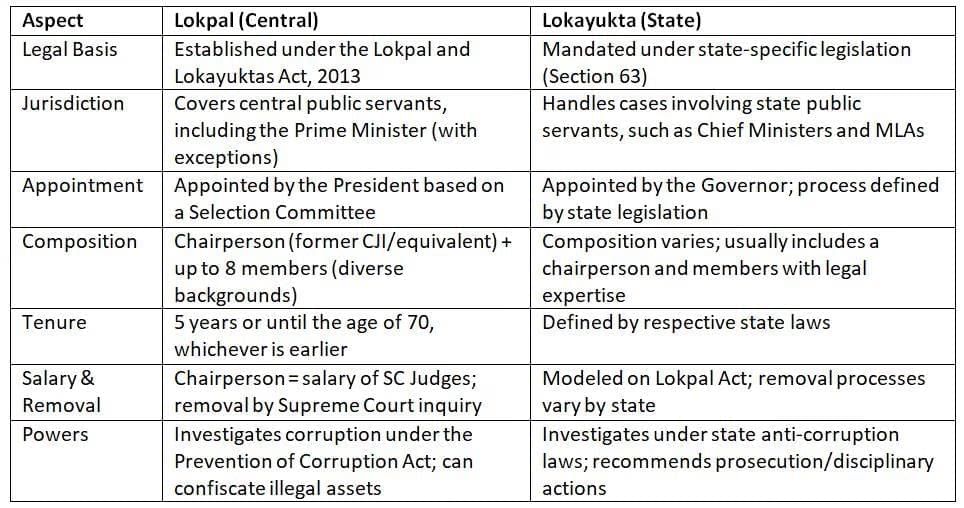
Mental Health Guidelines - Supreme Court’s Response to Rising Student Suicides
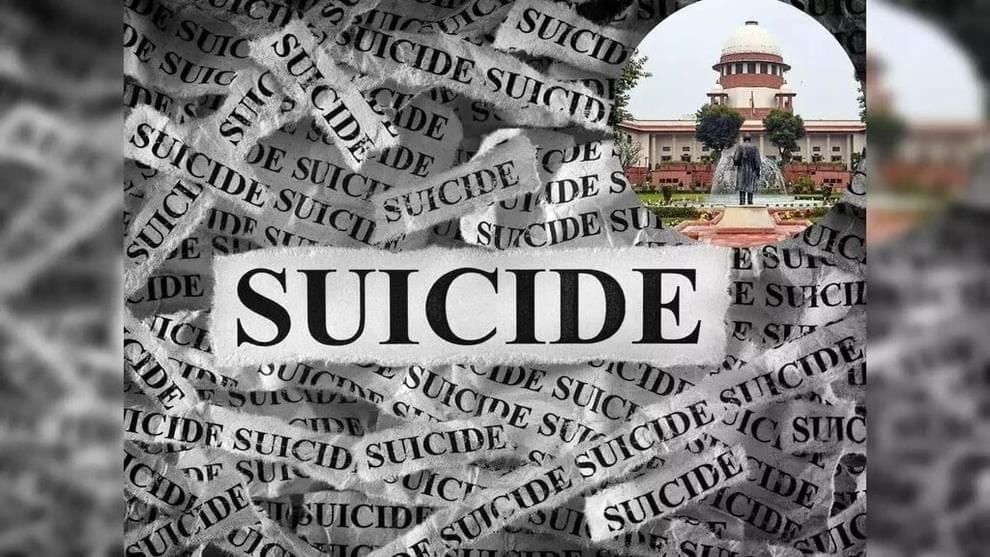
Why in News?
The Supreme Court has recently issued guidelines aimed at educational institutions throughout the nation in response to the alarming rise in student suicides.
Key Takeaways
- The Supreme Court described the mental health crisis among students as a "systemic failure."
- In 2022, 13,044 student suicides were reported, accounting for 7.6% of all suicides in India.
- New guidelines mandate the appointment of mental health professionals in educational institutions.
Additional Details
- Suicides on Campuses: The National Crime Records Bureau (NCRB) reported a significant increase in student suicides from 5,425 in 2001 to 13,044 in 2022, with a notable portion linked to exam failures.
- Supreme Court Directives: The Court issued 15 binding guidelines applicable to all educational institutions, urging them to implement mental health policies and support systems.
- Mandatory Counsellors: Institutions with over 100 students must hire qualified mental health professionals, while smaller institutions must establish referral links.
- Infrastructure Safety Measures: Residential institutions are required to take physical safety measures, such as installing tamper-proof ceiling fans.
- Ending Discriminatory Practices: Institutions are urged to eliminate practices that segregate students based on performance and to avoid public shaming.
- Accountability and Protection: Educational institutions must establish confidential mechanisms for addressing complaints of harassment and discrimination.
- Policy Framework: Institutions need to publish an annual mental health policy, referencing government initiatives like the Manodarpan and the National Suicide Prevention Strategy.
- This landmark ruling emphasizes the necessity of integrating mental health support into educational systems, shifting the focus from mere academic performance to the overall well-being of students. Success will depend on effective implementation and societal acceptance of these changes.
Healing Manipur: Fragile Peace Demands Genuine Reconciliation
Why in News?
Recently, the President's Rule in Manipur has been extended for another six months, effective from August 13, 2025, amid ongoing ethnic conflicts between the Kuki-Zo and Meitei communities.
Key Takeaways
- The Supreme Court's S.R. Bommai Judgment (1994) introduced judicial review of President's Rule under Article 356.
- Coalition politics and the rise of regional parties have reduced the misuse of President's Rule.
- Public awareness and media scrutiny have increased opposition to politically motivated impositions of President's Rule.
- The extension of President's Rule in Manipur is due to continued ethnic conflicts and a political vacuum after the resignation of Chief Minister N. Biren Singh.
Additional Details
- Judicial Review: The Supreme Court ruled that the President's decision to impose Article 356 is subject to judicial review, preventing arbitrary dismissals of state governments.
- Ethnic Conflict: The ongoing ethnic tensions between the Meitei majority and Kuki-Zo minority remain unresolved, despite a reduction in violence.
- Political Vacuum: The resignation of the Chief Minister created a governance void, necessitating central intervention to restore order.
- Historical Tensions: The ethnic composition of Manipur and historical grievances have contributed to the current crisis, particularly the Meitei demand for Scheduled Tribe status, which intensified conflict in May 2023.
- The situation in Manipur highlights the need for a comprehensive approach towards reconciliation, emphasizing the importance of political dialogue, the rule of law, and the empowerment of civil society to foster peace in the region.
National Crisis Management Committee
Why in News?
The Central Government has recently established the National Crisis Management Committee (NCMC) to effectively address situations that arise from major disasters with national implications.
Key Takeaways
- The NCMC is constituted under the Disaster Management Act, 2005.
- It serves as the apex body for managing major disaster situations.
Additional Details
- Composition: The NCMC is chaired by the Cabinet Minister, with members including the Union Home Secretary, the Secretary of Defence (for coordination), and heads of various departments, including the National Disaster Management Authority.
- Role: The chairperson may co-opt experts or officials from central or state governments, or other organizations, as needed during disaster situations.
- The committee evaluates preparedness for potential disasters and provides directions to enhance readiness.
- It coordinates and monitors actions from concerned ministries, state governments, and both governmental and non-governmental organizations involved in disaster response.
- It issues necessary directions for effective disaster response coordination across the country.
- The formation of the NCMC underscores the government's commitment to systematically address and manage major disasters, ensuring a coordinated response mechanism to safeguard lives and property.
The Fault Lines in India’s Electoral Architecture Are Visible
Why in News?
The Election Commission of India (ECI) is concluding the first phase of its Special Intensive Revision (SIR) of electoral rolls in Bihar by August 1, 2025. This process has ignited discussions around allegations of disenfranchisement, particularly affecting the poor, minorities, and migrants. Critics argue that the ECI's methods are biased, while supporters emphasize the importance of maintaining election roll integrity. However, both perspectives overlook the deeper issues embedded in India's electoral laws in relation to its highly mobile society.
Key Takeaways
- Historical electoral laws are outdated and do not account for India’s significant internal migration.
- Disenfranchisement affects millions, with over 1.2 million names deleted in Bihar alone during the revision process.
- The conflation of citizenship and residency complicates voter registration for internal migrants.
- International examples show that innovative solutions exist to balance electoral integrity and inclusiveness.
Additional Details
- Representation of the People Act, 1950: This Act was designed for an India with predominantly rural populations, assuming citizens would vote in their birthplace. Today, with over 450 million internal migrants, this assumption leads to systemic disenfranchisement.
- Electoral Deletions: In 2025, districts in Bihar with high migration rates saw roll deletions between 5%-7%, disenfranchising those who were absent during verification.
- Citizenship vs. Residency: The ECI's approach prioritizes residency, sidelining millions of internal migrants from electoral participation.
- International Perspectives: Countries like the United States, Philippines, and Australia have implemented measures to ensure voter inclusion, demonstrating that legislative reform is possible.
- Political parties often use voter disenfranchisement as a tool for mobilization rather than addressing the issue.
Conclusion
In conclusion, while defending the ECI from blame is necessary, it is not sufficient. Achieving true electoral justice requires both reform from the ECI and active engagement from political and civil society to ensure that all citizens are included in the electoral process and that their voices are heard.
Extension of President’s Rule in Manipur
Why in News?
The Home Minister is preparing to introduce a statutory resolution in the Rajya Sabha aimed at extending President’s Rule in Manipur for an additional six months.
Key Takeaways
- President’s Rule implies the suspension of a state's constitutional framework, placing it under the direct governance of the Union Government.
- The constitutional basis for President’s Rule is found in Articles 355, 356, and 365 of the Indian Constitution.
Additional Details
- What is President’s Rule? It denotes a situation where the state government is suspended, and the President assumes control through the Union Government.
- Constitutional Basis:
- Article 355: Mandates the Union to ensure governance in states aligns with the Constitution.
- Article 356(1): Empowers the President to take over the state's executive if a constitutional breakdown is reported.
- Article 365: Treats a state’s failure to comply with Union directives as a breakdown of constitutional machinery.
- Duration and Extensions:
- Initial duration is valid from the proclamation date.
- Extensions are possible every six months with parliamentary approval, up to a maximum of three years.
- Revocation:
- Can be revoked by the President anytime under Article 356(2) without needing parliamentary approval.
- Supreme Court Judgments:
- S.R. Bommai v. Union of India (1994): Established that President’s Rule is subject to judicial review, and a floor test is required to prove majority.
- Sarbananda Sonowal v. Union of India (2005): Expanded the scope for preventive action by the Union.
- Rameshwar Prasad v. Union of India (2006): Declared the dissolution of the Bihar Assembly unconstitutional.
- Key Reforms/Recommendations:
- Sarkaria Commission (1987): Suggested that President’s Rule should only be a last resort.
- Punchhi Commission (2010): Recommended localized emergency provisions for specific areas instead of the whole state.
- National Commission to Review the Working of the Constitution (2000): Advocated for the sparing use of Article 356 and proposed amendments for its application without a National Emergency if elections are unfeasible.
Conclusion
The extension of President’s Rule in Manipur is a significant political development, raising questions about governance and constitutional adherence in states under Union control.
Clean House: On India’s Septic Tank Desludging
Why in News?
Recently, a social audit presented in Parliament revealed that there were 150 hazardous cleaning deaths reported in 2022-23. This alarming statistic sheds light on the unsafe outsourcing practices, poor enforcement of safety laws, and inadequate funding for schemes like NAMASTE. Despite Supreme Court orders and successful models in states like Odisha and Tamil Nadu, the enforcement of mechanization in sanitation remains critically insufficient across the nation.
Key Takeaways
- The persistence of manual scavenging despite existing laws and schemes.
- Weak enforcement of legal provisions and inadequate funding for sanitation initiatives.
- Successful models from states like Odisha and Tamil Nadu provide alternative approaches.
Additional Details
- Weak Enforcement of Legal Provisions: Despite the Prohibition of Employment as Manual Scavengers and their Rehabilitation Act, 2013, enforcement remains minimal. For example, a report in 2024 indicated 150 workers died during hazardous cleaning in 2022-23.
- Poor Implementation and Underfunding of Schemes: Schemes like NAMASTE are lacking due to insufficient financial support and poor outreach. Of the 57,758 workers involved in hazardous cleaning, only 16,791 received PPE kits, highlighting the inadequacy of the released ₹14 crore for mechanization.
- Obscured Employer Liability: The use of subcontracting allows employers to evade responsibility for worker safety. A social audit showed that out of 54 hazardous cleaning deaths, only five workers were on government payroll, complicating accountability.
- Successful Models in Odisha and Tamil Nadu: These states have equipped identified sanitation workers with mechanized desludging vehicles, enhancing safety and reducing manual labor. For instance, vacuum trucks are now utilized for sewer cleaning, and robotic interventions have been tested to eliminate manual scavenging.
- Lack of Rural Data: The absence of reliable data on rural sanitation workers limits the effectiveness of mechanization schemes, leaving many workers unregistered and unaccounted for. In Chhattisgarh's rural blocks, no protective equipment has been provided, exposing workers to hazardous conditions.
- Government Initiatives: The Indian government has taken steps like banning manual scavenging and launching the NAMASTE scheme to promote mechanized sanitation. Welfare initiatives include cash assistance and health insurance under Ayushman Bharat.
- To effectively address the issues of manual scavenging and worker safety, reforms must focus on mandatory mechanization, financial rehabilitation, and comprehensive documentation of sanitation workers to ensure accountability and support.
National Cooperative Policy 2025 - Revitalising India’s Cooperative Movement
Why in News?
The Union Home Minister Amit Shah has recently introduced a new national cooperative policy, replacing the existing framework that had been in place for the past 23 years. This initiative aims to enhance the cooperative sector's institutional capacity, broaden its scope, and align it with India's overall development objectives.
Key Takeaways
- The new policy is guided by the vision of Sahkar se Samriddhi (Prosperity through Cooperation).
- It plans to increase the cooperative sector's contribution to GDP threefold by 2034.
- At least one cooperative society is to be established in every village.
- The policy aims to engage 50 crore citizens in active cooperative participation.
Additional Details
- Historical Context: The National Cooperative Policy 2025 is the first update since 2002, reflecting a renewed governmental commitment to the cooperative sector through the establishment of a separate Ministry of Cooperation in 2021.
- Key Features:The policy is structured around six pillars:
- Strengthening foundational systems
- Promoting vibrancy in existing cooperatives
- Preparing for future challenges through digitalisation and innovation
- Enhancing inclusivity and outreach
- Expanding into emerging sectors
- Engaging youth and building capacity for future generations
- Model Cooperative Villages: Each tehsil will host five cooperative villages aimed at developing local economies through sectors like dairy, fishery, and floriculture.
- Institutional Strengthening: The policy mandates full computerisation of PACS operations and technology-driven governance for enhanced transparency.
- Economic Impact: Currently, the cooperative sector contributes significantly to various aspects of India's rural economy, including agricultural credit and production, emphasizing the goal of creating a member-centric model for self-reliance.
- This comprehensive approach in the National Cooperative Policy 2025 is expected to foster inclusive growth, empower rural communities, and bolster India's cooperative movement for the future.
Palna Scheme
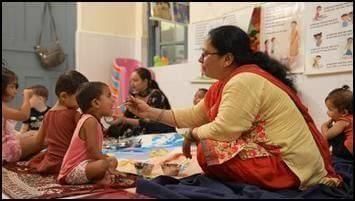
Why in News?
The Minister of State for Women and Child Development recently informed the Rajya Sabha regarding the implementation and significance of the Palna Scheme.
Key Takeaways
- The Palna Scheme is a Centrally Sponsored Scheme launched by the Ministry of Women and Child Development.
- It aims to provide quality crèche facilities for children aged 6 months to 6 years.
- Crèche facilities are available to all mothers, regardless of their employment status.
Additional Details
- Objective:The primary goal of the Palna Scheme is to ensure a safe and nurturing environment for children, focusing on:
- Nutritional support
- Health and cognitive development
- Growth monitoring and immunization
- Types of Crèches:There are two categories of crèches under the Palna Scheme:
- Standalone Crèches
- Anganwadi-cum-Crèches (AWCCs)
- Flexibility in Operations: Crèche timings are designed to be flexible based on local needs, operating for 26 days a month and for 7.5 hours each day.
- Funding Structure:The funding ratio varies by region:
- General States: 60:40 (Centre:State)
- North Eastern & Special Category States: 90:10
- UTs with Legislature: 60:40
- UTs without Legislature: 100% assistance from the Centre
- Services Provided:The scheme offers a comprehensive package of services, including:
- Daycare Facilities, including Sleeping Facilities
- Early Stimulation for children under 3 years
- Pre-school Education for children aged 3 to 6 years
- Supplementary Nutrition sourced locally
- Growth Monitoring
- Health Check-ups and Immunization
The Palna Scheme represents a significant step towards improving childcare services across India, ensuring that children receive the necessary support for their early development.
Takeaways From the Swachh Survekshan
Why in News?
The ninth edition of Swachh Survekshan, recognized as the world’s largest cleanliness survey, highlights significant advancements in India’s urban sanitation. Conducted under the Swachh Bharat Mission (SBM)-Urban, the survey has expanded from a competition among fewer than 100 cities in 2016 to an extensive assessment of over 4,500 urban centers in 2024-25. While rankings attract attention, the true value lies in the insights provided regarding urban waste management, governance, and evolving behavioral patterns among citizens and policymakers.
Key Takeaways
- The Swachh Survekshan serves as a critical assessment tool for city managers and policymakers.
- It evaluates cities based on ten parameters related to waste management and sanitation.
- Public participation and competition have been enhanced through the introduction of the Super Swachh League.
- Best practices from cities like Indore and Surat highlight the potential for innovation in waste management.
- Challenges remain in changing public behavior towards waste minimization and recycling.
Additional Details
- Super Swachh League: This new framework categorizes cities into five population brackets, allowing cities like Ahmedabad and Bhopal to improve their rankings. For instance, Bhubaneswar's rise from 34th to 9th place showcases the effectiveness of this approach.
- Best Practices: Notable innovations include Indore's six-way waste segregation model and Surat's monetization of treated sewage, demonstrating how creativity and community engagement can transform waste into resources.
- Economic Implications: The thematic focus on Reduce, Reuse, Recycle (RRR) emphasizes the economic benefits of waste management, essential for enhancing tourism and public health.
- Challenges: The survey reveals ongoing challenges, such as the need for behavioral change in waste management practices and the management of 1.5 lakh tonnes of solid waste generated daily.
Conclusion
Swachh Survekshan 2024-25 illustrates India’s journey towards urban cleanliness, signifying that with effective competition, data utilization, and public engagement, substantial improvements in waste management are achievable. Cities like Surat exemplify that transformation is not only possible but also replicable across various urban settings.
PRATIBHA Setu Initiative
Why in News?
The Union Public Service Commission (UPSC) has initiated the PRATIBHA Setu program to leverage the capabilities of civil service aspirants who reach the interview stage but do not make it to the final merit list.
Key Takeaways
- The initiative aims to connect candidates who passed the UPSC interview but were not selected with verified employers.
- It was launched with the results of the Civil Services Examination (CSE) 2023, evolving from the Public Disclosure Scheme established in 2018.
Additional Details
- Purpose: The initiative seeks to provide alternate career pathways for high-performing candidates who have demonstrated their capabilities through the rigorous UPSC selection process.
- Talent Pool: The program boasts a talent pool of over 10,000 high-performing candidates, allowing employers access to a well-evaluated group of potential hires.
- Eligibility: Candidates from various services such as Civil Services, Indian Forest Service, Engineering Services, and Central Armed Police Forces are included, while the National Defence Academy and Naval Academy candidates are excluded.
- Recruiter Access: Organizations can register through the Ministry of Corporate Affairs portal using their Corporate Identification Number (CIN).
- Platform Tools: Employers have access to a dashboard for shortlisting candidates and can view candidates' educational profiles and contact details digitally.
- Impact: This initiative not only opens new career paths for UPSC aspirants but also facilitates transparent and efficient hiring processes for employers.
In summary, the PRATIBHA Setu initiative enhances the relevance of the UPSC selection process beyond just final appointments, benefiting both candidates and employers in India.
Right to Vote - Understanding Its Legal Status and Constitutional Evolution in India
Why in News?
The Supreme Court is currently reviewing cases related to the Special Intensive Revision (SIR) of electoral rolls in Bihar, raising critical legal questions about the right to vote in India.
Key Takeaways
- The right to vote is essential for democratic function, but its classification has been debated as either constitutional or statutory.
- Different categories of rights exist in the Indian legal framework, impacting the interpretation and enforcement of voting rights.
Additional Details
- Classification of Rights:
- Natural Rights: Inherent and inalienable rights, such as the right to life and liberty, which are interpreted through fundamental rights.
- Fundamental Rights: Enshrined in Part III of the Constitution, including freedom of speech and equality, enforceable under Article 32.
- Constitutional Rights: Located outside Part III, like the right to property, enforceable through Article 226.
- Statutory Rights: Derived from laws passed by Parliament or State legislatures, such as rights under MGNREGA.
- Constitutional Provisions: Article 326 guarantees universal adult franchise, allowing citizens aged 18 and above to vote, contingent on legal qualifications.
- Judicial Interpretations: Landmark judgments have fluctuated between viewing the right to vote as statutory or constitutional.
The ongoing debate regarding the legal status of the right to vote has significant implications for electoral integrity and citizen rights, necessitating clarity and potential reconsideration in light of emerging democratic principles.
Dharmasthala Manjunatheshwara Temple
Why in News?
The Sri Dharmasthala Manjunatheshwara Temple in Dharmasthala has recently come under scrutiny following the formation of a Special Investigation Team (SIT) by the Karnataka government. This investigation addresses allegations concerning the mass secret burial of unidentified bodies in this significant pilgrimage center.
Key Takeaways
- The temple is dedicated to Lord Shiva, revered here as Lord Manjunatha.
- It has a rich history, dating back approximately 800 years.
- The administration of the temple is managed by a hereditary Jain family known as the Heggades.
Additional Details
- Architecture: The temple showcases Kerala temple architecture, which is distinct from other South Indian architectural styles. This uniqueness is evident in its structure and design.
- Construction Materials: The temple employs various materials including wood, clay, stone, metals, and laterite. The base structure is primarily composed of granite and laterite.
- The temple features a square plan with a pyramidal sloping roof, complemented by a wooden roof adorned with gold-plated copper plates to safeguard the framework.
- Wooden pillars prominently support the temple's front pavilion.
This temple not only serves as a spiritual hub but also reflects the rich cultural heritage and architectural grandeur of the region. The ongoing investigation highlights the temple's significance in contemporary discussions surrounding ethical and societal issues.
National Sports Policy 2025 - A Paradigm Shift towards Science, Support, and Sustained Excellence
Why in News?
The National Sports Policy 2025 represents a significant transformation in India's strategy for athlete development, emphasizing the integration of sports science, medicine, and technology. This approach is essential for achieving sustained elite performance on the global sports stage.
Key Takeaways
- The policy highlights the importance of supporting athlete performance through comprehensive systems rather than merely expecting success.
- It integrates various disciplines including science, technology, and medicine as foundational elements of sports development.
Additional Details
- Sports Science and Medicine Integration:
- Focus on injury surveillance and early intervention to enhance athlete longevity.
- Utilization of biomechanics and performance analytics for refining training and techniques.
- Emphasis on nutrition and recovery science to secure marginal gains that can influence podium finishes.
- Incorporation of mental health and cognitive conditioning to mitigate psychological pressure during competitions.
- Infrastructure and Institutional Development:
- Upgrading of the Sports Authority of India (SAI) regional centres and National Centres of Excellence, in collaboration with the National Centre for Sports Science & Research.
- Examples include the Bengaluru Centre, which serves as an advanced sports science hub under the Target Olympic Podium Scheme (TOPS), and the Indira Gandhi Stadium in Delhi, which features a new Return to Sports division.
- Medical Team Support:
- For the first time, a dedicated 10-member Indian medical team has been formed to support athletes during the Olympic Games in Paris.
- Technology - Backbone of the New Sports Ecosystem:
- Implementation of AI-driven platforms and real-time dashboards for tracking athlete performance and recovery.
- Predictive tools to assess injury risks and facilitate timely interventions.
- Enhancing transparency and efficiency in sports governance through digital tools.
- Innovation and Research Ecosystem:
- Establishment of a Sports Innovation Task Force and provision of research grants to develop India-specific technologies.
- Focus on creating a self-reliant pipeline for athlete development through interdisciplinary research.
The National Sports Policy 2025 marks a critical evolution in India's sporting philosophy, transitioning from a focus on passion to precision-driven performance through systematic planning and preventive care. It serves as a pivotal case study in policy innovation, evidence-based governance, and the integration of sports with science and technology.
|
122 videos|947 docs|37 tests
|
FAQs on Indian Polity and Governance (Part 1): July 2025 Current Affairs - Current Affairs & General Knowledge - CLAT
| 1. What is judicial discretion and how does it impact bail decisions under POCSO? |  |
| 2. What are the medical boundaries for AYUSH practitioners? |  |
| 3. Why are India's courts considered to be clogged, and what are the implications? |  |
| 4. What is the role of Internal Complaints Committees (ICC) under the POSH Act? |  |
| 5. How does criminalizing adolescent sex affect the objectives of the POCSO Act? |  |
















